WHAT WE ATE
- Ramen with raw egg – 65/100, Arita, Saga
- Champon – 70/100, Arita, Saga



Nestled along the Main street of pottery town Arita, Hitofushi is a humble ramen shop that’s a lifesaver for many, as finding food around Kami-Arita station can be challenging despite its status as a tourist destination. For those hunting for your favourite Arita-ware or visiting the famous Porcelain Shrine (Sueyama Shinto Shrine), don’t miss the chance to try some Saga-style ramen served in local Arita ware.


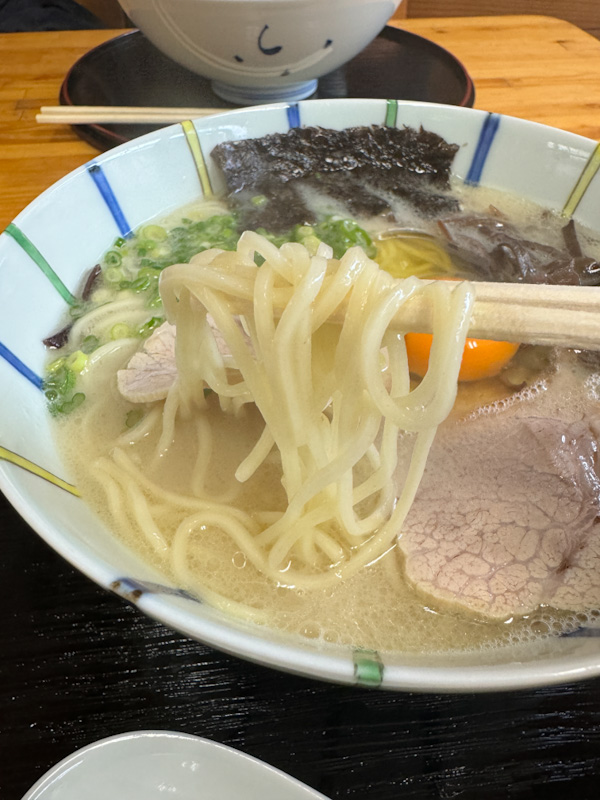
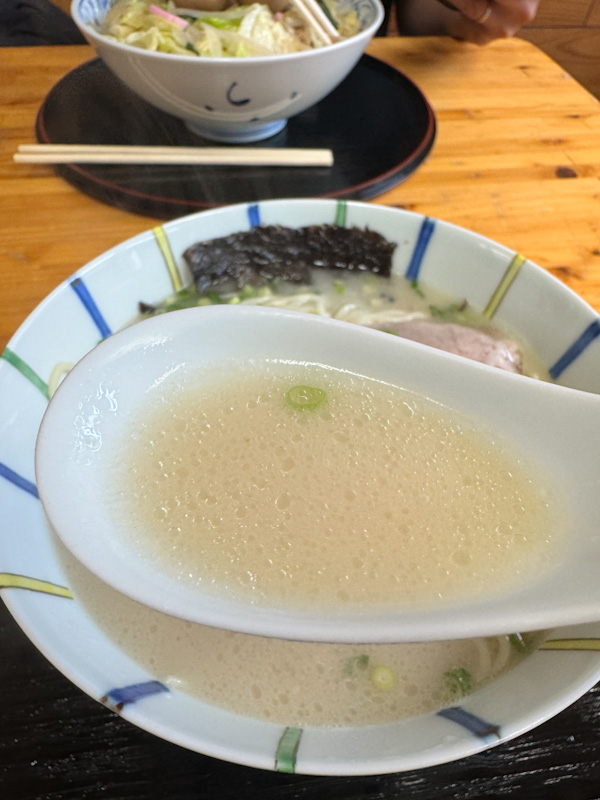

Ramen with Raw Egg: 65/100
Noodle: 25/35
The noodles are medium thick, chewy, and have a slightly sticky mouthfeel. Saga-style ramen tends to have softer noodles than its Hakata sibling, giving them a slightly more doughy and less dense texture. Despite the softness, the noodles hold up well, soaking in the soup without any signs of bloating or sogginess. There’s also a subtle earthy wheat taste.
Soup: 25/35
The soup is thinner than classic Hakata Tonkotsu ramen, with a more fluid consistency. It’s savory-sweet with a meaty flavor profile. The pork taste is strong but not overwhelming. While it’s considerably rich and leaves a sticky feeling on your lips, it lacks the classic Tonkotsu creaminess, with a noticeable salty Shio-like undertone.
Meat: 5/20
The thinly sliced chashu is chewy and rather tough. The marination is thin, and the porky odor is quite prominent.
Topping: 10/10
Toppings include classic black fungus and green onion. The addition of raw eggs in the Saga-style ramen makes the soup noticeably creamier when mixed in, compensating for the initial lack of creaminess mentioned earlier.
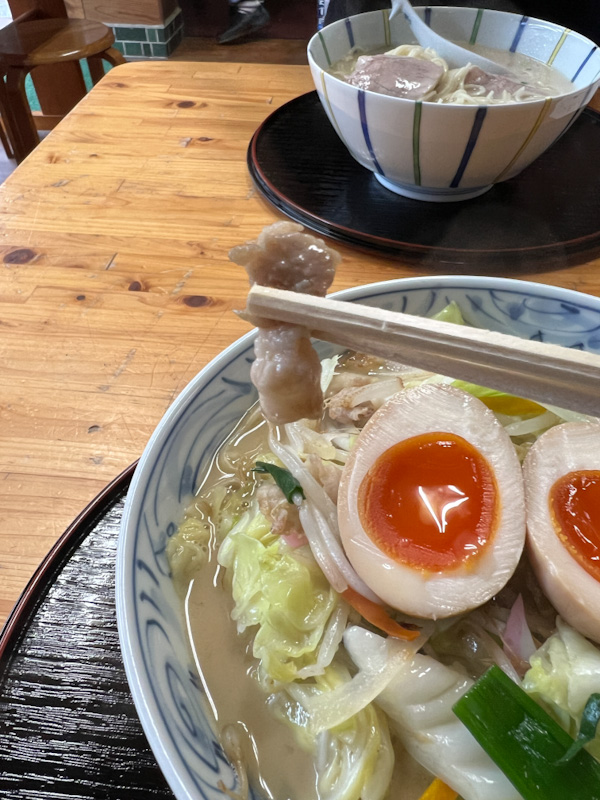


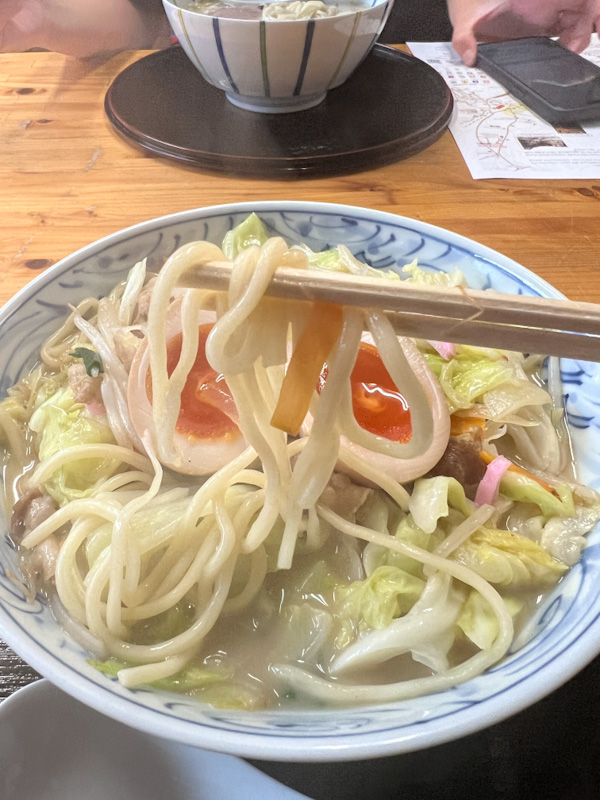
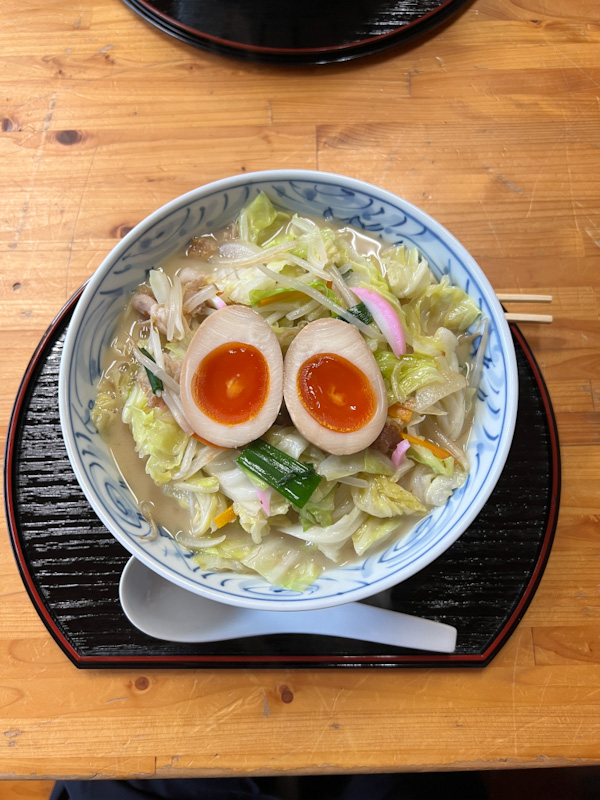
Champon: 70/100
Noodle: 20/35
The noodles are thick and rounded with a pale yellow hue. The texture is firm yet slightly doughy but leaves a very clean bite. Champon noodles use sodium carbonate instead of potassium carbonate, resulting in a texture that feels like a cross between typical ramen and soba, and they are much less springy than other ramen noodles of similar thickness. They lack a distinct taste, likely due to being cooked with the broth and ingredients, absorbing their flavors without exhibiting any unpleasant lye water taste.
Soup: 25/35
The soup has a savory-sweet Tonkotsu base but is much less porky than typical Tonkotsu. It has a milky characteristic with a nutty sesame-like undertone, resulting in a meaty yet clean soup that is not too overwhelming.
Meat: 15/20
Instead of chashu, Champon features thin slices of lightly cooked pork belly. The meat is chewy and tender with a sweet and savory seasoning. While the meat in Champon is less of a highlight since everything is stir-fried together, it still tastes good.
Topping: 10/10
The toppings in Champon are comparable to those in ramen like Jiro or Stamina Ramen, which typically come with an overwhelming amount of toppings. This Champon includes lots of cabbage, carrots, green onions, and fish cake. They are all stir-fried, so there isn’t much variation in seasoning, but they add different textures and flavors to the meal.
DISCLAIMER
One man’s meat is another man’s poison.
Find out more about our palettes and how we evaluate our ramen here. 😉


